
Other mistake: When the Japanese planes take off for Pearl Harbor, some of the 3 man torpedo planes only have a pilot.
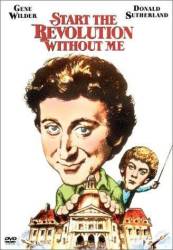
Other mistake: About 3/4 of the way through the film a boat arrives at the left quay of the Seine. Looking west down the river with Notre Dame on the right of the scene you can see a tour bus cross the bridge.

Other mistake: When Edgar goes to retrieve his hat and umbrella, he uses a fishing pole to snag the hat from Napoleon's head. You see him reeling in the line when it should be reeling out (counter-clockwise vs. clockwise)-the next shot shows the line going down. This happens twice.

Other mistake: During the early part of the movie, when Patton is in Morocco, you can see two kids visibly mugging for the camera as they do cutaways on two distinct occasions.

Other mistake: When they are lifting the boxes of gold at the end of the movie you can tell that the boxes are empty.
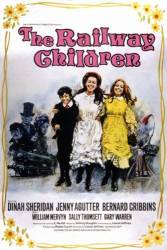
Other mistake: In the last scene where the children are walking away from the house after their father has gone in, in the background on the right hand side of the screen, a tree falls.

Other mistake: As Taylor is dying, there is blood on his hand. When his hand lands on the bomb's detonator after he dies, his hand slides off, but no blood is shown on the detonator. (01:29:35)

Other mistake: When the stricken airliner is on final approach for landing, both pilots stare intently out the windscreen, never so much as glancing down at the flight instruments. In an instrument landing the pilot must look continuously at the instruments until the copilot reports that the runway is in sight, as that is the only way he can follow the controller's instructions.
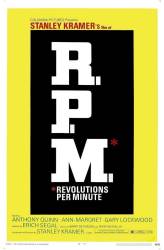
Other mistake: In the scene where the one guy is dragging the dead guy around on the creeper and is about to cut the old man's hand off you can see the old man blink and move his eyes. He's supposed to be dead. If he was alive I'm sure he'd have made some noise when he got his hand cut off. (01:08:46)
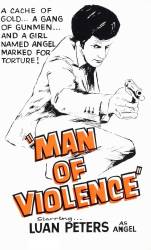
Other mistake: In the opening credits, character actor Andreas Malandrinos has his last name (as it happened not infrequently throughout his career) misspelled as "Melandrinos" (00:02:55)
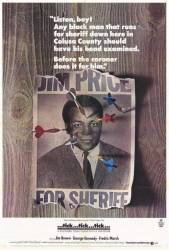
Other mistake: The siren changes from manual to electronic as the newly elected sheriff rides through town on his first night. Also during this ride is a reflection on the windshield of a dash light which the car isn't equipped with.
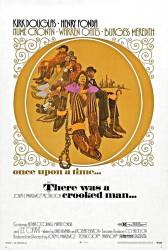
Other mistake: When Paris gets to prison he has a wad of money on him. Before he got that far the court would have taken the money away and given it back to the guy he stole it from.

Other mistake: A little more than halfway through the movie, they are robbing the train cars by uncoupling and switching the switch direction back and forth to direct the unwanted engine and caboose to the left branch. He switches the switch to go right for the wanted cars and forgets to switch it for the caboose. If you look at the tracks of the switch, it is already set for the train to go left. He then remembers to change the switch and the caboose goes left where it would have already gone.

Other mistake: The steer horn that penetrates Forrest Tucker near the end of the movie is at right angles to the rest of the steer horn.
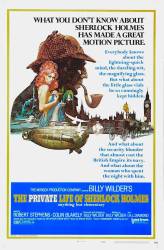
Other mistake: Like most Sherlock Holmes films 'The Private Life Of Sherlock Holmes' is set in Victorian England: Queen Victoria even makes an appearance. Holmes and Watson go to Loch Ness in Scotland, where they see the Loch Ness monster. (Spoiler alert) it turns out that the Loch Ness Monster is not a living creature, but an experimental submarine. Like most people who would have seen the film on its release in 1970, they are familiar with the Loch Ness monster (even if they do not necessarily believe in it). But the first documented sightings of the Loch Ness Monster were only made in 1933. Nobody ever thought there might have been a monster in Loch Ness before 1933.
Suggested correction: Sightings and lore of the Loch Ness Monster date back over 1,500 years. In fact, the indigenous people of the region carved images of the monster into stone as far back as 500 AD. The 1933 hoax was certainly not the first time the monster was sighted; however, the hoax was inspired by the centuries-old Loch Ness legend, of which Holmes, Watson and everyone else would be well aware in the Victorian era.
The only carved images from that period are Pictish symbol stones, none of which are particularly associated with Loch Ness.
On the contrary, the Pictish "Drumbuie Stone" (recovered at Drumbuie Farm on Loch Ness in the mid-19th Century) depicts a large serpentine creature, very much matching traditional descriptions of the Loch Ness monster. Https://canmore.org.uk/site/12626/drumbuie.
Suggested correction: This is somewhat incorrect. The 1933 photograph that was published in newspapers may have brought the idea of a Loch Ness Monster to a wider audience, reports of a creature in Loch Ness (or Loch River) were around long before then. And just because the term "Loch Ness Monster" may have first been printed in 1933 doesn't mean the term didn't exist before then. In a fictional story surrounding fictional events, there's no mistake in bringing up a creature already rumored to have existed.
Well observed sir! I thought somebody might well say that. Maybe I should have gone into more detail. May I make it clear that I have absolutely no problem with a sighting of the Loch Ness Monster in a Sherlock Holmes film, since Sherlock Holmes was a fictional character, and 'The Private Life Of Sherlock Holmes' was an imaginary story. (Plus the film contained some intentionally comic elements, it was a bit 'tongue in cheek', so lets not take it too seriously!) But lets look at the history of sightings of the monster. The first sighting to attract widespread attention was on 22 July 1933, when the Spicers saw a creature near (but not in) the Loch. On 12 November Hugh Gray took the photograph you allude to. In 1934 Rupert Gould published the first book about it. You say that earlier sightings may not have been widely reported. You are quite correct! One D. Mackenzie said he saw a monster in the Loch in 1872, but did not tell anybody at the time. A sixth century life of St. Columba records an encounter with a 'water beast' in the River Ness. My point was that, in the film, Holmes, Watson, and most other people, are familiar with the story of the Loch Ness Monster. (Spoiler alert again) : The 'monster' is an experimental submarine, which Sherlock's brother, Mycroft, is helping the war office to develop. To stop people realising they were experimenting with new military technology, they would develop the submarine in Loch Ness, so anybody seeing it would think it was the Monster (to add to the deception they give it an artificial neck and head). My point is that, while most people who saw the film in 1970, and most people using this website, would be quite familiar with the story of the Loch Ness Monster. So, whether or not they believe in its existence, they would get the joke (after all, the film was not meant to be taken completely seriously). In the Victorian era the Loch Ness Monster would, at best, have been a local rumour, not something that was known worldwide so it is doubtful that even people as undoubtedly intelligent as Holmes and Watson would have known about it. If they saw a monster in Loch Ness they would not say 'Oh, that's the Loch Ness Monster'. They would ask 'Whatever is that great big thing going through the water?'.

Other mistake: After the cricket match when Elspeth Wentworth runs away from her father, Mr Wentworth (Richard Wattis) calls her Kathryn, mistakenly calling the character by the actress' name (Kathryn Dawe).